Showing Spotlights 81 - 88 of 235 in category All (newest first):
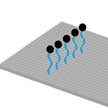 Synthetic nanomotors and DNA walkers, which mimic a cell's transportation system, are intricately designed systems that draw chemical energy from the environment and convert it into mechanical motion. Using such DNA walkers as signal amplifier for nucleic acids detection has only recently been reported. Researchers now report that they converted a DNA walker into a linear fluorescence signal amplifier on a rectangle DNA origami that can improve the detection of target molecules such as nucleic acids.
Synthetic nanomotors and DNA walkers, which mimic a cell's transportation system, are intricately designed systems that draw chemical energy from the environment and convert it into mechanical motion. Using such DNA walkers as signal amplifier for nucleic acids detection has only recently been reported. Researchers now report that they converted a DNA walker into a linear fluorescence signal amplifier on a rectangle DNA origami that can improve the detection of target molecules such as nucleic acids.
Aug 21st, 2017
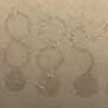 Researchers have developed a stretchable and transparent graphene-based electronic tattoo (GET) sensor that is only hundreds of nanometers thick but demonstrates high electrical and mechanical performance. They show that a GET can be fabricated through a simple wet-transfer/dry-patterning process directly on tattoo paper, allowing it to be transferred on human skin exactly like a temporary tattoo, except this sensor is transparent. Due to its ultra-thinness, a GET can fully conform to the microscopic morphology of human skin via just van der Waals interactions and can follow arbitrary skin deformation without mechanical failure or delamination for an extended period of time.
Researchers have developed a stretchable and transparent graphene-based electronic tattoo (GET) sensor that is only hundreds of nanometers thick but demonstrates high electrical and mechanical performance. They show that a GET can be fabricated through a simple wet-transfer/dry-patterning process directly on tattoo paper, allowing it to be transferred on human skin exactly like a temporary tattoo, except this sensor is transparent. Due to its ultra-thinness, a GET can fully conform to the microscopic morphology of human skin via just van der Waals interactions and can follow arbitrary skin deformation without mechanical failure or delamination for an extended period of time.
Jul 31st, 2017
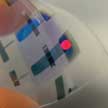 Flexible sensors hold great promise for various innovative applications in fields such as medicine, healthcare, environment, and biology. Over the past decade, the development of flexible and stretchable sensors for various functions has been accelerated by rapid advances in materials, processing methods, and platforms. For practical applications, new expectations are arising in the pursuit of highly economical, multifunctional, biocompatible flexible sensors.
Flexible sensors hold great promise for various innovative applications in fields such as medicine, healthcare, environment, and biology. Over the past decade, the development of flexible and stretchable sensors for various functions has been accelerated by rapid advances in materials, processing methods, and platforms. For practical applications, new expectations are arising in the pursuit of highly economical, multifunctional, biocompatible flexible sensors.
Jul 7th, 2017
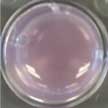 Ionizing radiation (e.g. X-rays) is widely used in the treatment of cancer, but can cause significant damage to healthy cells. The overarching goal of radiotherapy is to safely, accurately and efficiently deliver ionizing radiation in order to treat diseases, typically cancer. A novel sensor technology can help medical physicists and oncologists effectively plan fractionated radiotherapy in the clinic, reduce accidental overexposures, and reduce radiation-induced toxicity.
Ionizing radiation (e.g. X-rays) is widely used in the treatment of cancer, but can cause significant damage to healthy cells. The overarching goal of radiotherapy is to safely, accurately and efficiently deliver ionizing radiation in order to treat diseases, typically cancer. A novel sensor technology can help medical physicists and oncologists effectively plan fractionated radiotherapy in the clinic, reduce accidental overexposures, and reduce radiation-induced toxicity.
Jun 29th, 2017
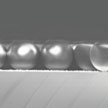 Sometimes nanoscale diamonds contain a specific type of impurity: a single nitrogen atom where a carbon atom should be, with an empty space right next to it, resulting from a second missing carbon atom. This nitrogen-vacancy (NV) impurity gives each nanodiamond special optical and electromagnetic properties. Nitrogen vacancy centers in nanodiamonds require a method to manipulate their electron spin orientations physically. Recent work demonstrates a general active NV system: Nanodiamond swimmers that self-propel.
Sometimes nanoscale diamonds contain a specific type of impurity: a single nitrogen atom where a carbon atom should be, with an empty space right next to it, resulting from a second missing carbon atom. This nitrogen-vacancy (NV) impurity gives each nanodiamond special optical and electromagnetic properties. Nitrogen vacancy centers in nanodiamonds require a method to manipulate their electron spin orientations physically. Recent work demonstrates a general active NV system: Nanodiamond swimmers that self-propel.
Jun 20th, 2017
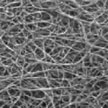 In spite of the numerous research efforts regarding the development of miniaturized, low-cost, and highly sensitive sensors based on different organic and semiconducting materials, carbon nanotubes still remain the most promising ones. An international team of researchers has now developed a simple way for fabrication and operation of carbon nanotube-based chemical sensors. The sensor consists of carboxylated single-walled carbon nanotubes, which were spin-coated over the polymer substrate between sputtered metal electrodes.
In spite of the numerous research efforts regarding the development of miniaturized, low-cost, and highly sensitive sensors based on different organic and semiconducting materials, carbon nanotubes still remain the most promising ones. An international team of researchers has now developed a simple way for fabrication and operation of carbon nanotube-based chemical sensors. The sensor consists of carboxylated single-walled carbon nanotubes, which were spin-coated over the polymer substrate between sputtered metal electrodes.
Jun 19th, 2017
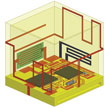 Researchers have demonstrated a fully integrated and packaged wireless sensor for environmental monitoring applications. The disposable sensor was developed using low-cost additive manufacturing technologies; namely, inkjet printing and 3D printing. This is a demonstration of 3D-printed fully-integrated System-on-Package (SoP) employing inkjet-printed sensors. This work could pave the way for low-cost disposable fully integrated wireless sensor nodes.
Researchers have demonstrated a fully integrated and packaged wireless sensor for environmental monitoring applications. The disposable sensor was developed using low-cost additive manufacturing technologies; namely, inkjet printing and 3D printing. This is a demonstration of 3D-printed fully-integrated System-on-Package (SoP) employing inkjet-printed sensors. This work could pave the way for low-cost disposable fully integrated wireless sensor nodes.
Jun 2nd, 2017
 Research groups around the world are taking big strides towards developing ultrathin and flexible sensor devices that could be attached to the skin, or even organs, and monitor vital body functions. However, the adhesion to skin of many of these sensor patches is weak. A new milestone study on skin adhesives for wearable devices is about to change that. It demonstrates that it is possible to strongly and non-invasively attach soft wearable sensors and other devices to dry or wet skin.
Research groups around the world are taking big strides towards developing ultrathin and flexible sensor devices that could be attached to the skin, or even organs, and monitor vital body functions. However, the adhesion to skin of many of these sensor patches is weak. A new milestone study on skin adhesives for wearable devices is about to change that. It demonstrates that it is possible to strongly and non-invasively attach soft wearable sensors and other devices to dry or wet skin.
Jun 1st, 2017
 Synthetic nanomotors and DNA walkers, which mimic a cell's transportation system, are intricately designed systems that draw chemical energy from the environment and convert it into mechanical motion. Using such DNA walkers as signal amplifier for nucleic acids detection has only recently been reported. Researchers now report that they converted a DNA walker into a linear fluorescence signal amplifier on a rectangle DNA origami that can improve the detection of target molecules such as nucleic acids.
Synthetic nanomotors and DNA walkers, which mimic a cell's transportation system, are intricately designed systems that draw chemical energy from the environment and convert it into mechanical motion. Using such DNA walkers as signal amplifier for nucleic acids detection has only recently been reported. Researchers now report that they converted a DNA walker into a linear fluorescence signal amplifier on a rectangle DNA origami that can improve the detection of target molecules such as nucleic acids.
 Subscribe to our Nanotechnology Spotlight feed
Subscribe to our Nanotechnology Spotlight feed





